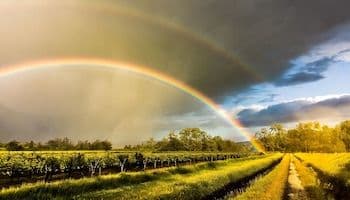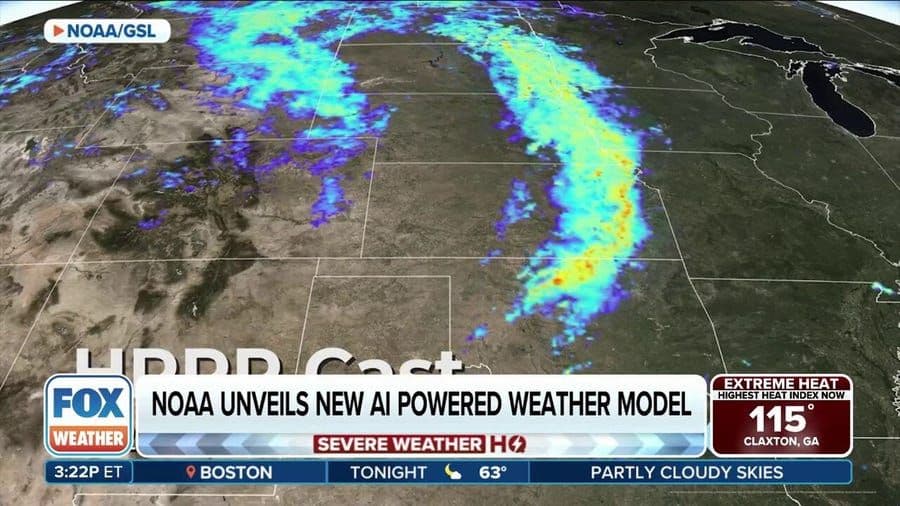Decoding Tomorrow's Whispers: The Art and Impact of Weather Prediction
Explore the intricate science & tech behind weather forecasts. Uncover their profound impact on daily life & future innovations in predicting nature's moods.
Beyond the Barometer: Why We Look Up
From the moment we wake, a glance outside or a quick check on our phones often dictates the rhythm of our day. Will it be a sunny stroll or a dash through a downpour? This seemingly simple question underpins a complex, vital system: weather forecasting. It’s far more than just knowing whether to grab an umbrella; it's about safeguarding lives, protecting livelihoods, and enabling daily existence. Think about the critical 'Thunderstorm Advisory Issued' or the preparedness demonstrated by a 'Tsunami Exercise Scheduled' – these aren't mere suggestions, but urgent calls to action stemming directly from sophisticated atmospheric insights. Even a routine forecast, like 's prediction of 'plenty of sunshine, chance of 1 or 2 overnight showers' with specific wind patterns and UV index, subtly steers decisions across countless sectors. It impacts everything from a farmer's planting schedule to an airline's flight plan, from a construction crew's work day to a family's weekend outing. Our innate need to anticipate nature's moods, coupled with the profound impact weather has on our safety and economy, is precisely why we instinctively look up, seeking those crucial whispers of tomorrow.
The Symphony of Data: How Forecasts Are Made
The seemingly effortless daily forecast is, in fact, the crescendo of a vast, intricate symphony of data. It begins with an unparalleled collection of atmospheric observations – from ground-based sensors and weather balloons to advanced orbiting our planet. These instruments tirelessly measure everything from temperature and humidity to wind speed and atmospheric pressure, creating a colossal dataset. This raw information is then fed into highly complex , run on supercomputers capable of performing trillions of calculations per second. These models simulate the Earth's atmosphere, projecting its future state based on current conditions and the fundamental laws of physics. Historical data, like 's 'Long-term Statistics for August' or 'Historical Extremes for August' dating back to the 19th century, also play a crucial role, providing climatological context and helping refine the models. Expert meteorologists then interpret these model outputs, adding their nuanced understanding of local conditions and atmospheric phenomena, transforming raw data into the precise, actionable forecasts we rely on daily, whether accessed via a national weather service website or a convenient mobile app.
Living with the Elements: Adapting to Nature's Rhythms
Armed with these sophisticated predictions, societies and individuals alike have honed the art of living harmoniously, or at least strategically, with nature's unpredictable rhythms. Beyond simply deciding on attire for the day, accurate weather forecasts are indispensable tools for proactive adaptation. For instance, knowing about 'plenty of sunshine' with a 'very high UV Index' prompts public health advisories for sun protection, while warnings of 'overnight showers' might influence outdoor event planning or agricultural irrigation. But the impact extends far beyond daily convenience. Critical advisories, such as a 'Thunderstorm Advisory Issued,' allow to prepare and the public to take shelter, potentially saving lives. Similarly, regular 'Tsunami Exercises Scheduled' underscore the importance of preparedness, demonstrating how forecasts and warnings translate into tangible safety protocols and community resilience. From managing shipping routes and airline schedules to optimizing energy consumption and planning urban infrastructure, our ability to anticipate weather patterns allows us to mitigate risks, seize opportunities, and ultimately build more resilient communities in the face of an ever-changing climate.
Tomorrow's Outlook: Innovations Shaping Future Predictions
The journey of weather forecasting is far from over; it's a dynamic field continuously pushing the boundaries of what's possible. Looking ahead, the future of weather prediction is being sculpted by remarkable innovations, promising even greater accuracy, longer lead times, and hyper-local detail. and are revolutionizing how vast datasets are processed and interpreted, enabling models to learn from past errors and identify subtle patterns that human analysis might miss. Imagine forecasts that not only tell you the temperature but precisely how it feels in your immediate microclimate, or predictions that can anticipate a sudden downpour with unprecedented precision, a level of detail far beyond current 'chance of 1 or 2 overnight showers.' Advances in satellite technology, drone-based atmospheric sensors, and high-resolution numerical models are creating a much finer-grained picture of the atmosphere. This ongoing evolution will not only enhance our daily planning but also bolster our long-term climate resilience, allowing us to adapt more effectively to extreme weather events and build smarter, safer communities. The whispers of tomorrow are growing clearer, thanks to relentless human ingenuity and technological progress.
Related Articles

The Unseen Architects of Tomorrow: How Weather Forecasts Guide Global Decisions

The Unseen Architects of Tomorrow: How Weather Forecasts Guide Global Decisions

The Unseen Architects of Our Skies: How Meteorology Navigates a Volatile Climate

The Unseen Architects of Our Skies: How Meteorology Navigates a Volatile Climate

The Sky's Whisper: Navigating Life's Atmospheric Rhythms

The Sky's Whisper: Navigating Life's Atmospheric Rhythms

Atmosphere Unlocked: The Global AI Pursuit Reshaping Our Weather World
